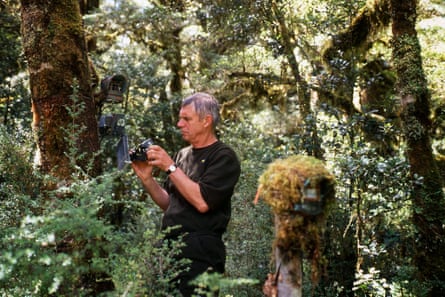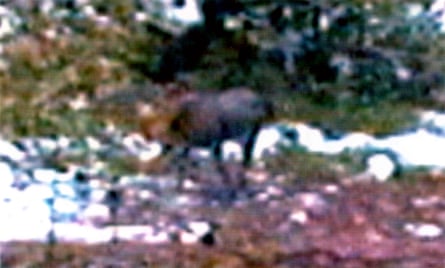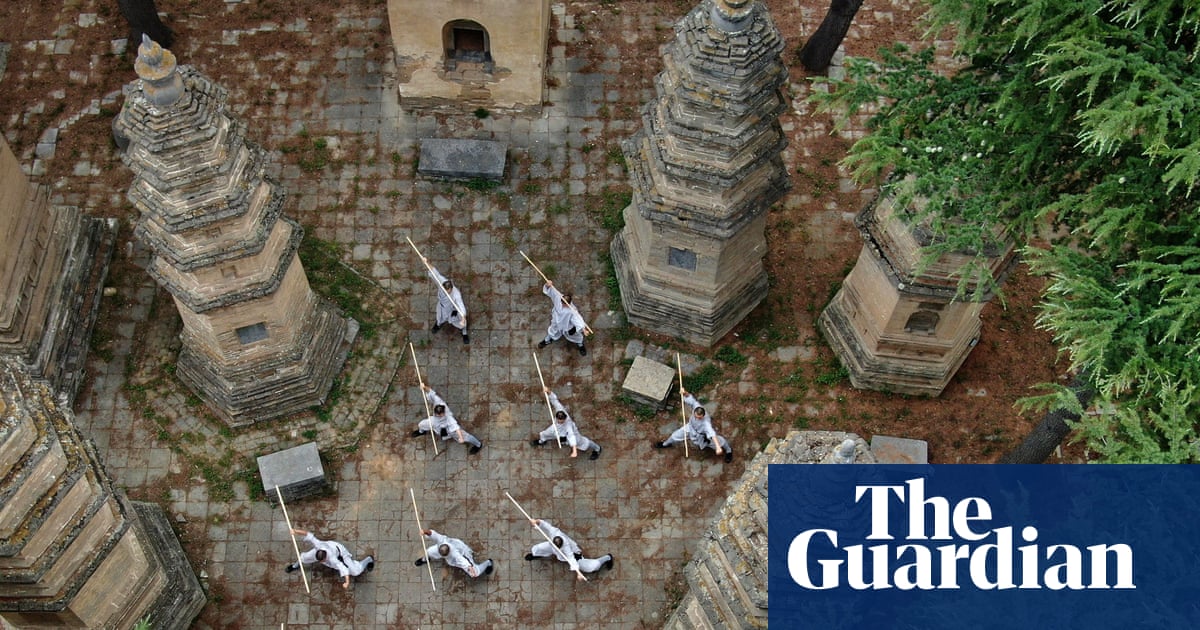Over 100 years ago, a ship dropped anchor in the frigid fjords of New Zealand’s South Island and released 10 nervous moose on to the shore. The crew watched as the animals – the last survivors of a weeks-long voyage from Saskatchewan, Canada – skittered out of their crates and up into the dense, lonely, rainforest.
The moose had arrived on a flight of fancy, as part of the then premier’s grand vision to turn Fiordland national park into a hunters’ paradise. It was the second attempt to release moose into the region – in a country whose only native land-based mammals are bats – after nearly all of an earlier herd died crossing the seas. Red deer and wapiti, or elk, were also released around the same time for game-hunting.
Over the next few years, moose sightings were reported and photographs of their hulking frames lying dead next to hunters occasionally graced the pages of local newspapers. The last confirmed sighting was in 1951, after which, they were pronounced extinct.
Yet in the decades since, there have been clues that the animals remain in New Zealand. People have found footprints too large to be deer, branches 7 to 8 feet high broken and stripped of their leaves, fur snagged in trees and cast antlers. There have also been numerous unconfirmed sightings of moose.
Seventy-five years on from the last confirmed photograph, New Zealanders are still hunting moose – not for their heads, but for answers to an enduring mystery that has captured the public imagination for decades: are the elusive beasts still roaming the vast Fiordland wilds? Or is this just another myth of many projected on to the eerie, isolated terrain?
That question came one step closer to being answered in March, when within two weeks of one another two hiking groups from the US and Canada reported seeing moose while tramping along Fiordland’s Kepler Track, sparking a new flurry of national interest.
On the trail of New Zealand’s Nessie
Ken Tustin, a biologist, former helicopter pilot and hunter who is more widely known as New Zealand’s “moose man” has been tracking moose for more than 40 years – half his lifetime.

In 1995 he captured grainy footage on a trail camera of what he believes is a moose and in 2002, a tuft of fur he found snagged on a tree was confirmed to be moose through DNA testing at a Canadian university.
It is tempting to draw comparisons between the moose mystery and the quests for Bigfoot, or the Loch Ness monster but Tustin says moose are in “quite a different category”, given they were introduced.
“The existence [of moose] is so extraordinary, it seems unbelievable. But we ask people, before you dismiss it, please look to the evidence.”
Canadian Antoine Beauchamp says there was no mistaking the large animal, which crossed their path 10 metres away during their hike.
“All three of us had the same thought: that this is a moose,” Beauchamp said, adding that his hiking party regularly see moose at home, sometimes in their own back yards.
“The colour was very distinctive, it had a big shoulder bump which is not common for red deer or wapiti … this, combined with the height of the animal, it was clear it was a moose.”
Without photographic evidence, the department of conservation is sceptical moose still exist.

When the most recent sightings emerged, its Te Anau-based operations manager John Lucas said until there was proof, the department would “continue to take the view that we are most likely dealing with a deer … or possibly a red/wapiti cross that has been mistaken for a moose.”
Moose are larger than red deer and wapiti, and unlike the latter two species, which have tree-like antlers, moose have broad flat antlers that fan out into finger-like edges. Moose are typically dark brown, red deer are reddish-brown in summer and grey in winter, while wapiti are fawn-coloured with a rump patch. Moose are typically solitary, while red deer and wapiti tend to move in herds.
“In some respects, if someone actually gets a photo, that might be quite disappointing – the mystery would be solved,” Lucas says.
“There is a saying that the presence of absence is not necessarily the absence of presence and that will endure until someone actually takes a photograph.”
Fiordland a ‘locus’ for mystery
Fiordland is New Zealand’s largest national park and forms a major part of a Unesco world heritage site. Its rainforest, ragged mountains, glassy fjords and lakes draw tourists to its famous hikes, while its dramatic and mostly inaccessible terrain is a perfect canvas for mythology and rumour.
For over a century, stories abounded of a lost Māori tribe living in Fiordland, while some people believed the moa – a large flightless bird that went extinct hundreds of years ago – stalked the vast valleys into the late 1800s.

“Fiordland is always the locus for this sort of stuff,” says Charlie Mitchell, a senior journalist for The Press who has covered the moose story for years.
“We sort of need Fiordland to be this locus of mystery, because otherwise we have to accept that we’ve managed to survey everything, we’ve found everything.”
Sometimes, species deemed extinct have reemerged, such as the takahē, another large flightless bird as round and blue as Earth, which was rediscovered in Fiordland in 1948, 50 years after the last sighting.
Mitchell says the odds of moose following in the footsteps of takahē are extremely low, but not zero.
“That’s what makes it frustrating and compelling at the same time … as long as that [chance] is there, I think there will be people still searching for the moose.”
Tustin concedes he may never find a moose but seeing one is almost besides the point.
“I love that moose have taken on an almost spiritual element in Fiordland,” he says.
“When I think of Fiordland … I think rain on the smooth water, diminishing ridges, hanging cloud, ferns bobbing under the rain. It’s mood, its mystery, and my goodness, a moose fits in there beautifully.”

 3 months ago
107
3 months ago
107

















































